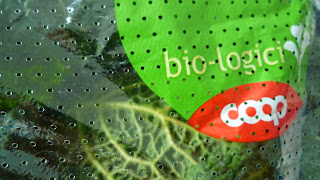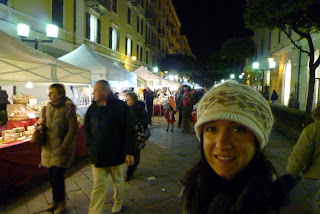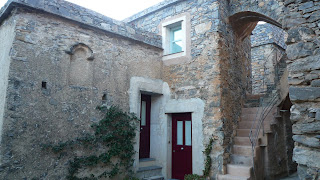The Savoy Cabbage is a flavorful crinkled leaf cabbage, which I've been told is one of the best varieties for cooking. Its head consists of loose leaves, which vary in color from dark green to light green containing lacy patterned veins. I am still experimenting with recipes, but have found a real crowd pleaser with this pie.

 Being that we are away from home, and away from the home grown produce, we appreciate COOP. They have such a great selection of biological products, from fruits and vegetables to household products. I am hooked! I can happily say that my house is stocked with either biological, DOP or IGP products. (denominazione di origine protetta e indicazione geografica protetta)
Being that we are away from home, and away from the home grown produce, we appreciate COOP. They have such a great selection of biological products, from fruits and vegetables to household products. I am hooked! I can happily say that my house is stocked with either biological, DOP or IGP products. (denominazione di origine protetta e indicazione geografica protetta) 
This is the time of lent, Quaresima, so I would omit the speck. The pie tastes just as good without!
Crust: a bit unusual, but a nice crunchy change
300 g Durum wheat flour (flour for pasta)
100 g beer
40 g evo oil
Just mix the ingredients and line a pie pan. I place a sheet of baking paper over the pasta to roll out evenly. It is a bit sticky.
Filling
Half of a large head of cabbage
one onion
50g speck (or prosciutto, ham)
Parmigiano-Reggiano DOP half cup, or more for your taste
3 eggs
bay leaf, salt and pepper
In a pot of boiling water, cook the cabbage cut up into small pieces. In a separate large pan cook down an onion in a small amount of water. Once cooked add the speck and the bay leaf. Add boiled cabbage to the pan and simmer. (If you omit the meat, a tsp of olive oil would be a nice addition.) Remove the bay leaf.
In a bowl, scramble the eggs with the Parmigiano-Reggiano cheese. Add salt and pepper.
Transfer filling to prepared crust and top with egg mixture. Place in oven at 180. When egg is cooked and the crust is golden you are set!































































